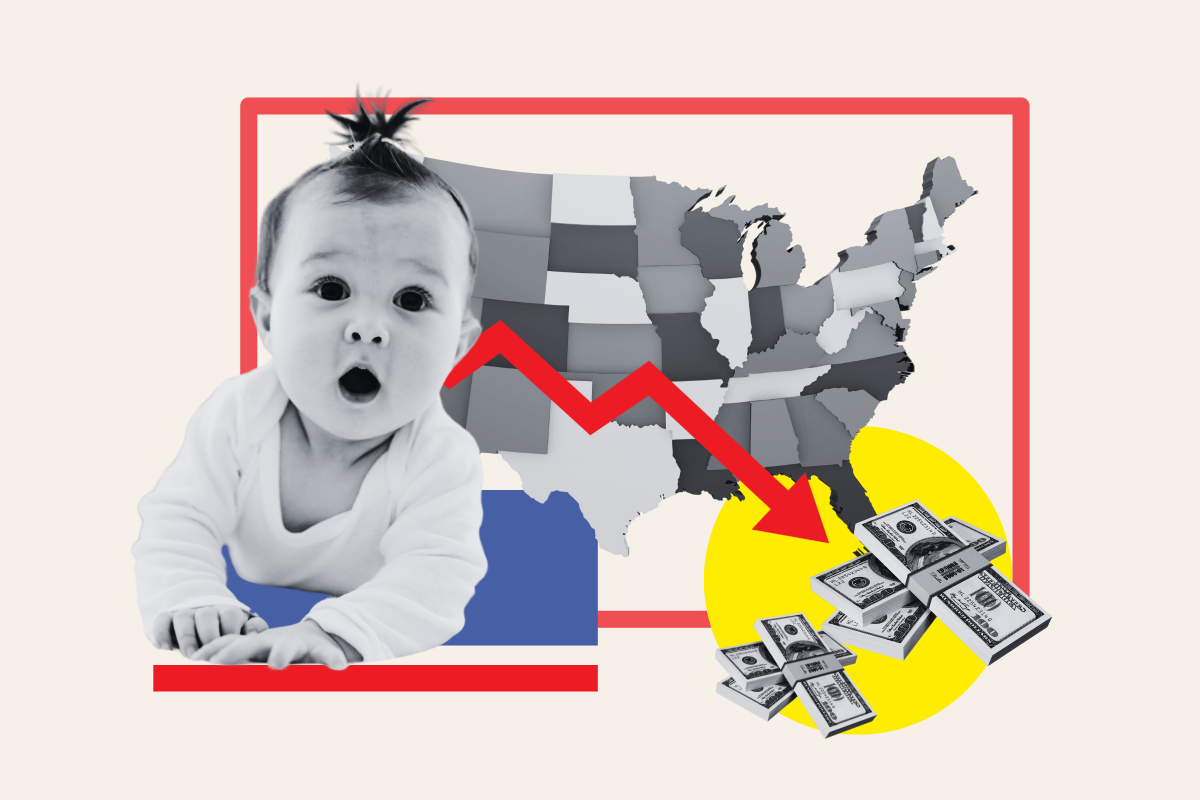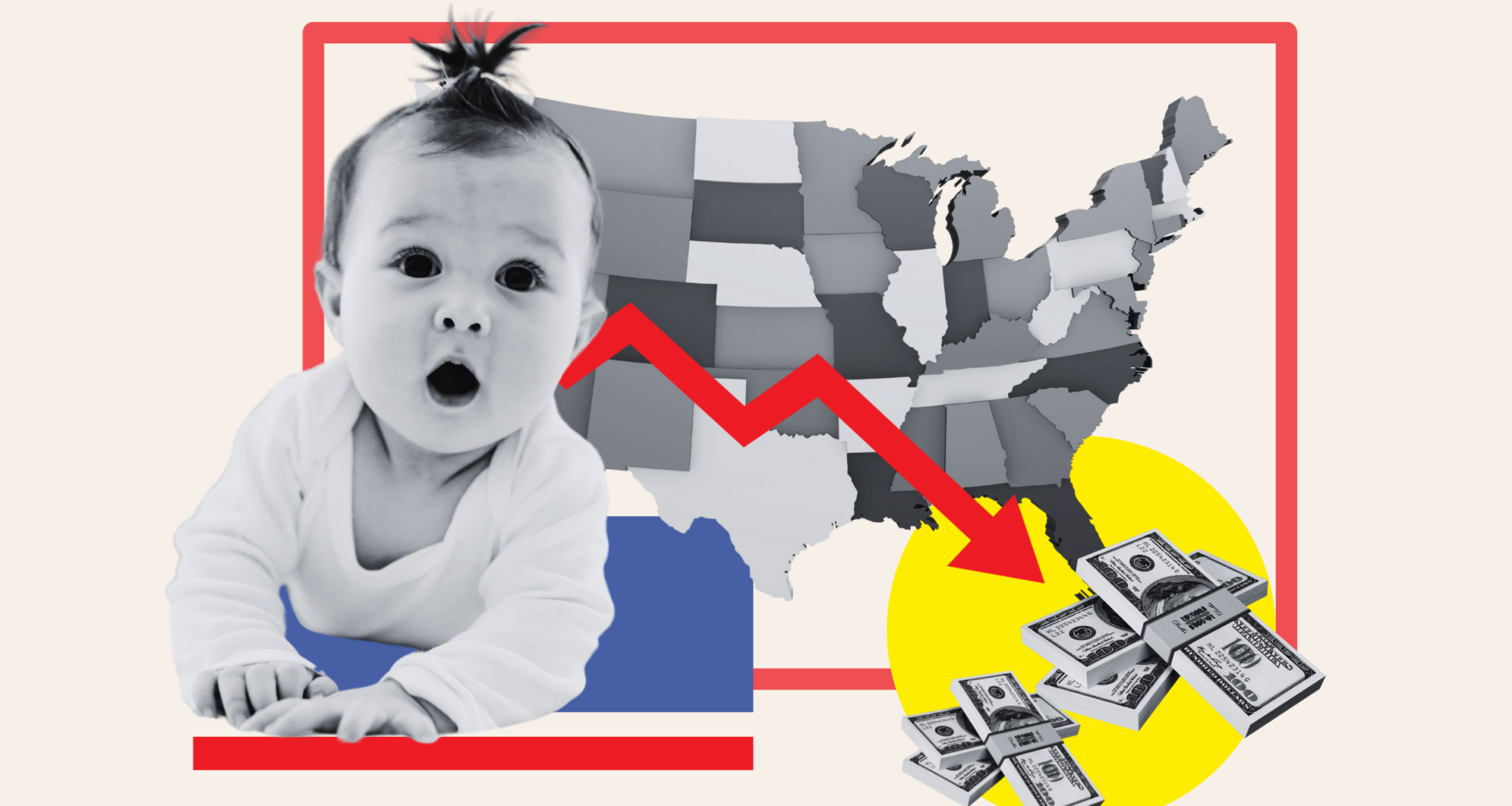The declining U.S. birth rate, and the broader demographic shifts it contributes towards, have become a growing concern for policymakers and economists alike.
Economic and demographic experts told Newsweek that the trend is one that threatens to destabilize not only the U.S. economy—potentially resulting in several percentage points being knocked off America’s annual GDP growth—but global markets as well.
“I think it’s the single most important issue facing economies across the world, and by some distance,” said James Pomeroy, a global economist at HSBC.
As is the case with almost every country on earth, U.S. birth rates have been trending downward for decades. According to the Centers for Disease Control and Prevention (CDC), the number of births declined 2 percent between 2022 and 2023, with the general fertility rate dropping 3 percent to 54.5 births per 1,000 women aged 15-44. While preliminary data showed a slight uptick last year, analysis by AP found that the overall birth rate rose only for Hispanic women.

America’s Birth Rate Sparks Fears For Economy
America’s Birth Rate Sparks Fears For Economy
Photo-illustration by Newsweek/Getty
According to the St. Louis Federal Reserve, just under 24 births occurred per 1,000 people in 1960, whereas by 2022, that number had declined to 11.
A shrinking workforce, a depleted consumer base, reduced tax revenue and added strains on Social Security can all be listed among the possible impacts of an unchecked drop in fertility.
Taken together, these lead Jesús Fernández-Villaverde to describe the issue as “the existential problem of our time.”
A professor of economics at the University of Pennsylvania, Fernández-Villaverde said that, in the long-run, the primary challenge would be a “huge decrease” in the country’s growth rate, and cited Japan as a key example.
“Between 1991 and 2019, Japan’s GDP grew at an annual rate of 0.83 percent, significantly lower than the U.S. rate of 2.53 percent,” he told Newsweek. “The main driver of their weak economic performance? Japan’s dramatic demographic collapse.”
These challenges are compounded by an aging population, as is also being witnessed in the U.S., as the shrinking proportion of taxpayers, workers and consumers is matched by an increase in the number of those relying on Social Security and pension systems.
“One of the main reasons people worry about a decline in fertility is because it makes it more difficult to sustain social programs like Social Security, when you have many fewer workers for each beneficiary,” Kasey Buckles, an economics professor at the University of Notre Dame, told Newsweek. “The worker-to-retiree ratio was around five in 1960, but is now about half that, and is projected to continue to fall.”
HSBC’s Pomeroy said that the combination of declining birth rates—and the resultant reduction in both workers and consumers—alongside the increase of those at pensionable age could result in a 0.3 to 0.5 percentage-point decline in potential GDP growth per year, an impact that will be heightened for those states with the lowest birth rates.
“It also means that politicians are more likely to make short-term decisions to help that growing share of the population in their 50s, 60s and 70s,” he added, “and not thinking about the longer-term given the lower number of young people in society.”
Fernández-Villaverde, meanwhile, puts the impact on economic growth at “around 2 percent” per year, and said that the effects are already being felt in states with lower-than-average birth rates.
“Colleges are already closing in New England, much less so in Florida and Texas,” he said.
What Can Be done?
“No other variable comes close to having as big an impact on potential growth or fiscal positions down the line as birth rates,” Pomeroy said. “Therefore it should be front-and-center of the discussions from policymakers about what we should be doing, rather than still being a niche data point or concern for many.”
The issue appears to be on the radar of some U.S. policymakers, with the new administration having enacted a number of seemingly pronatalist policies. These include attempts to increase access to in vitro fertilization (IVF) and prioritizing funding transportation projects in states with above-average birth rates.

Donald Trump delivers remarks before signing an executive order on expanding access to IVF at his Mar-a-Lago resort on February 18, 2025, in Palm Beach, Florida.
Donald Trump delivers remarks before signing an executive order on expanding access to IVF at his Mar-a-Lago resort on February 18, 2025, in Palm Beach, Florida.
Joe Raedle/Getty Images
But not enough is being done to address America’s birth-rate decline, according to Fernández-Villaverde, who told Newsweek that if given 30 minutes to talk with Trump, “I would only talk about fertility.”
He provided three friendly measures the administration could take: Prioritizing affordable housing—”in particular starter homes, no gigantic mansions or high rises”; Ensuring “radically more generous maternity leaves”; And reorganizing society in a more “children-friendly” manner, both by reducing crime and creating more “family-friendly schools schedules.”
Buckles told Newsweek that there are many ways to tackle the challenges that accompany low birth rates beyond encouraging people to have more children.
“One of the key ones is immigration,” she said. “Immigration policy is much more likely to have large, immediate impacts on the size of the working-age population than efforts to increase fertility through policy.”
“With birth rates where they are today, over the course of a generation, the population would drop by 25 percent without any immigration,” said James Pomeroy. “That’s enough of a drag to weigh on all sorts of economic activity.”
